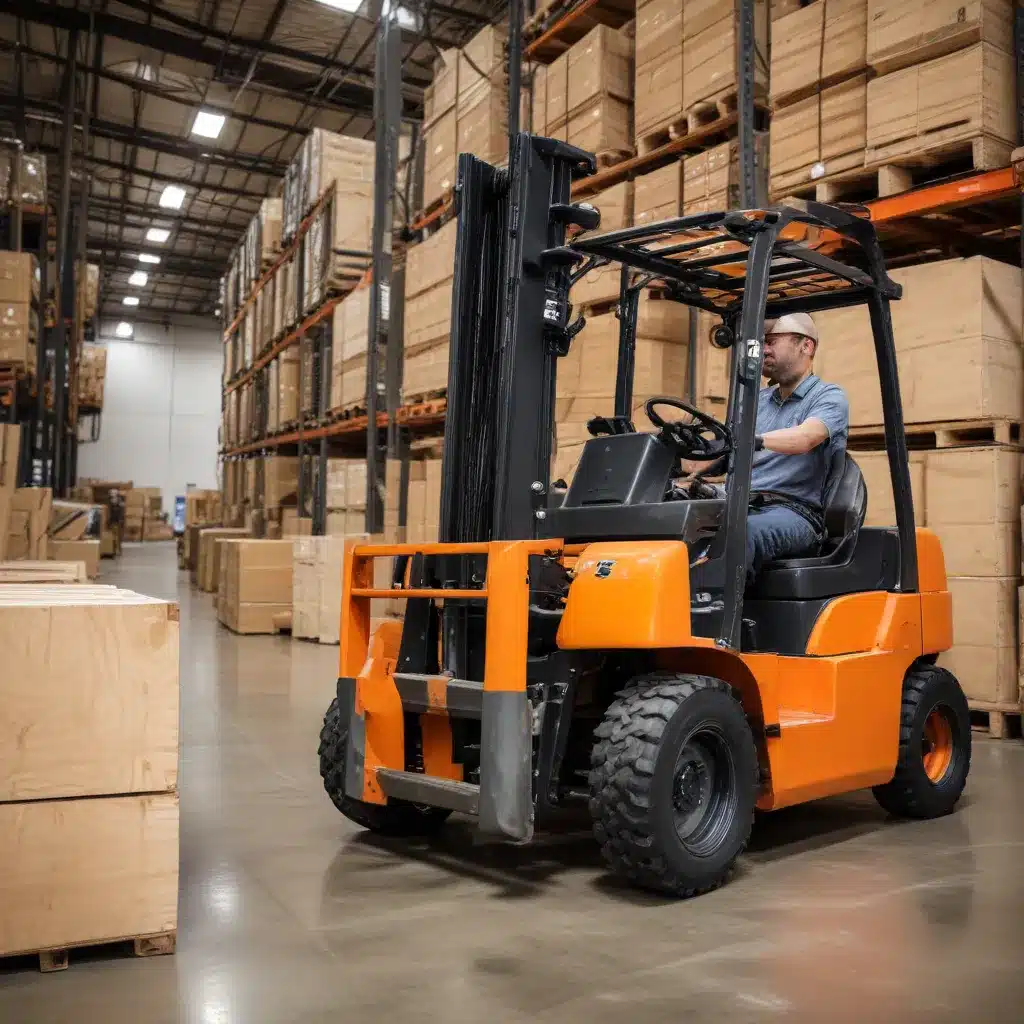
Forklift Financing Fundamentals: Unlocking Growth and Efficiency
In today’s competitive landscape, construction and manufacturing businesses are constantly seeking ways to streamline operations, enhance productivity, and gain a strategic edge. One essential piece of equipment that plays a pivotal role in these industries is the forklift. These versatile machines are indispensable in managing material handling, optimizing warehouse organization, and accelerating order fulfillment. As businesses navigate the forklift acquisition process, a crucial decision arises: should you lease or buy?
Leasing forklifts can offer several advantages, particularly for startups and businesses with limited capital. By minimizing upfront costs, leasing allows companies to access the latest equipment without a substantial initial investment. This financial flexibility can be a game-changer, enabling businesses to scale their operations and upgrade their fleets as needed, without being weighed down by ownership responsibilities.
Leasing Advantages:
– Lower Upfront Costs: Leasing typically requires a smaller down payment compared to purchasing, freeing up capital for other business investments.
– Access to New Technology: Leasing arrangements often include maintenance and repair services, ensuring businesses can take advantage of the latest forklift models and features without worrying about obsolescence.
– Improved Cash Flow: Leasing can provide more predictable monthly payments, allowing for better cash flow management and financial planning.
On the other hand, purchasing forklifts can offer long-term benefits for businesses with a more established presence and a clear understanding of their material handling needs. Owning the equipment outright can lead to potential tax advantages and the ability to build equity over time, creating a strong foundation for future growth and expansion.
Buying Advantages:
– Potential Tax Benefits: Forklift purchases may qualify for tax deductions or depreciation, which can positively impact a company’s bottom line.
– Build Equity: Owning the equipment outright allows businesses to build equity, which can be leveraged for future financing or strategic investments.
– Customization Flexibility: Purchased forklifts can be customized to suit specific operational requirements, ensuring optimal efficiency and productivity.
When evaluating the forklift financing landscape, it’s essential to consider the total cost of ownership, including maintenance, insurance, and operator training expenses. A comprehensive budget that accounts for these ongoing costs can help businesses make an informed decision that aligns with their long-term goals and financial capabilities.
Navigating Forklift Financing Options
Beyond the traditional lease-versus-buy decision, businesses have access to a variety of financing options to acquire the forklifts they need. These include:
-
Direct Loans: Securing a direct loan from a financial institution or equipment finance provider can offer competitive interest rates and flexible repayment terms, particularly for businesses with a strong credit profile.
-
Hire Purchase Agreements: These arrangements allow businesses to eventually own the forklift after a predetermined lease period, making them an attractive option for companies seeking long-term equipment ownership.
-
Equipment Rentals: Some providers, such as BigRentz, offer equipment rental solutions, which can be beneficial for businesses with fluctuating or seasonal demand patterns. Rentals provide the flexibility to scale operations without long-term commitments.
Regardless of the financing approach, it’s crucial to carefully evaluate the terms, interest rates, and any associated fees to ensure the selected option aligns with the business’s financial needs and strategic objectives.
Evaluating Forklift Acquisition Costs
The cost of a forklift can vary significantly, depending on factors such as the brand, model, engine type, and condition of the equipment. Understanding these cost drivers can help businesses make informed decisions and navigate the acquisition process effectively.
New Forklift Costs:
– Electric Forklifts: Typically range from $15,000 to $50,000, depending on capacity and features.
– Diesel Forklifts: Can cost upwards of $50,000 for larger, heavy-duty models.
Used Forklift Costs:
– Purchasing a used forklift can provide significant cost savings, with prices ranging from $5,000 to $30,000, depending on the equipment’s age, condition, and features.
Ongoing Operational Costs:
– Maintenance and Repairs: Expect to allocate approximately 10-20% of the forklift’s purchase price annually for routine maintenance and unexpected repairs.
– Fuel Costs: Electric forklifts typically have lower fuel expenses compared to their diesel or gas-powered counterparts.
By thoroughly understanding the various cost factors, businesses can make informed decisions and create accurate budgets that account for both upfront and long-term expenses associated with forklift ownership or leasing.
The Importance of Partnering with Reputable Providers
Selecting the right financing partner is crucial to ensuring a successful forklift acquisition process. Businesses should seek out providers that offer specialized programs and expertise tailored to their specific industry and growth stage.
Look for financing partners that:
– Understand Industry Challenges: Providers like BNC Finance have developed specialized programs for startups and entrepreneurs, ensuring the financing plan not only meets current needs but also supports strategic growth.
– Offer Transparent and Flexible Options: A good financing partner should provide clear, transparent information about the available options and work with businesses to create financing structures that align with their cash flow and long-term goals.
– Act as Consultants: Knowledgeable financing partners can offer valuable insights and guidance, empowering businesses to make informed decisions that support their long-term success.
By collaborating with the right financing partners, businesses can navigate the complexities of forklift acquisition and unlock the benefits of efficient material handling, whether through leasing or buying.
Conclusion: Unlocking the Power of Forklift Financing
Navigating the forklift leasing versus buying landscape is a critical decision for construction and manufacturing businesses seeking to drive operational efficiency and support their growth. By understanding the various financing options, evaluating the total cost of ownership, and partnering with reputable providers, businesses can make informed choices that align with their strategic objectives and financial capabilities.
Whether you choose to lease or buy, the right forklift financing strategy can be a game-changer, enabling businesses to streamline their material handling, enhance productivity, and position themselves for long-term success in a competitive marketplace.

